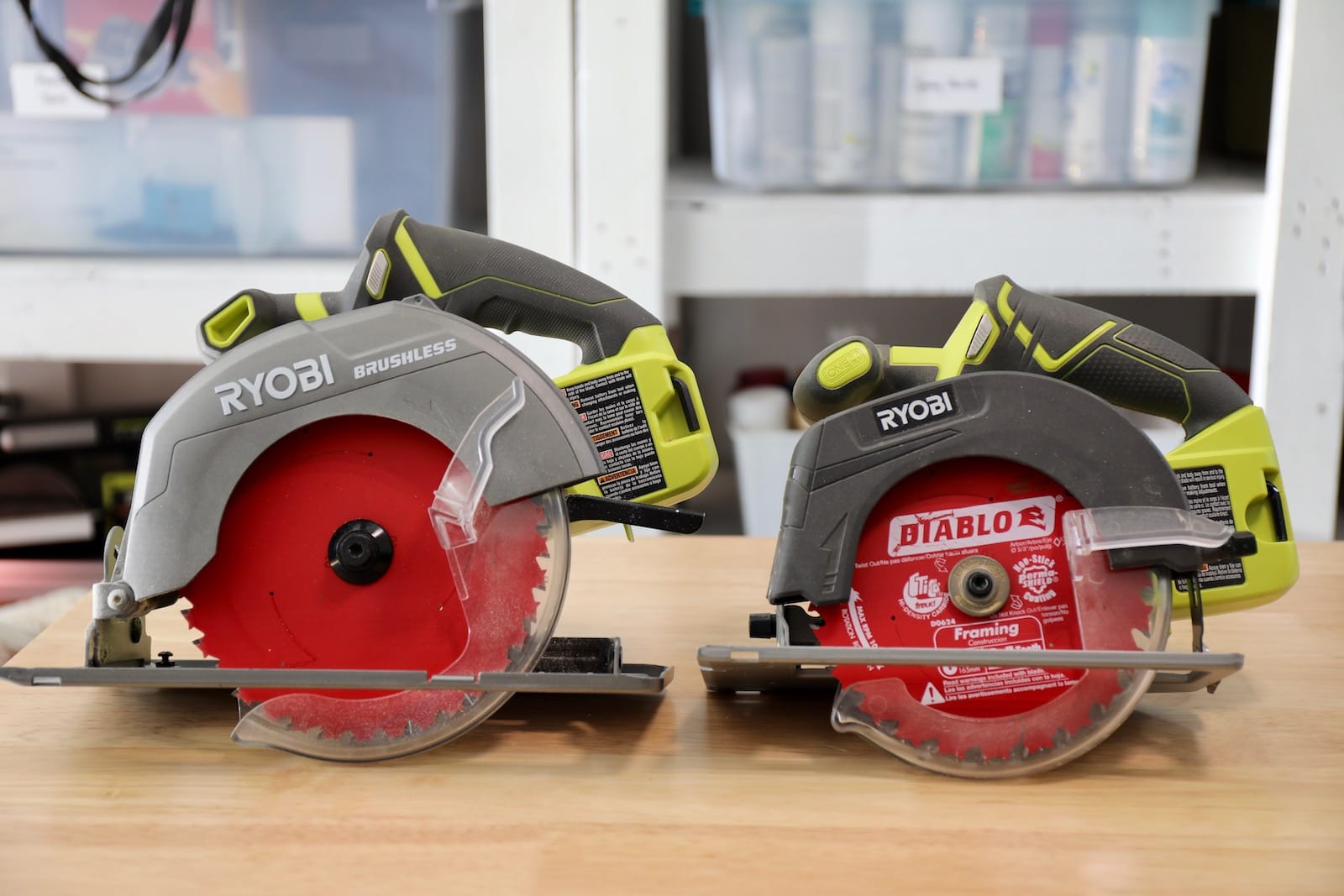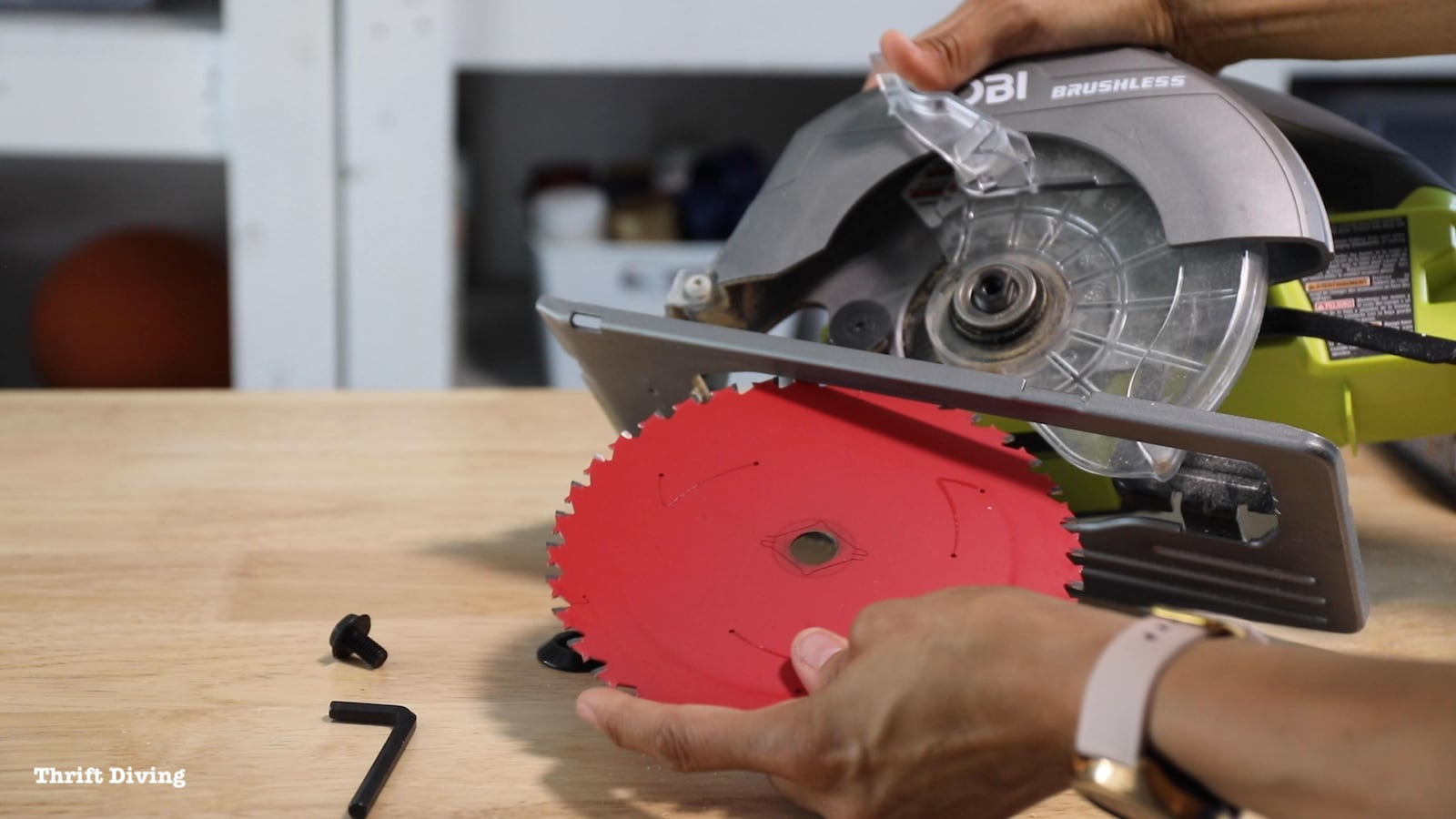If you’ve ever wondered if all circular saw blades fit all saws, you’re in the right place! Curiosity about tools and how they work is always a sign of a budding DIY enthusiast. Well, my young friend, today we’re going to answer that burning question for you.
Now, picture this: You’re in the middle of a woodworking project, excited to make that perfect cut, when you realize your circular saw blade needs replacing. Panic mode! But before you hit the panic button, let’s explore the world of circular saw blades and the important question of compatibility.
So let’s dive in and find out if all circular saw blades fit all saws—stay tuned for some fascinating knowledge!

Do All Circular Saw Blades Fit All Saws?
When it comes to using circular saws, one common question that arises is whether all circular saw blades can fit all saws. Understanding the compatibility between saws and blades is crucial for selecting the right blade for your cutting needs. In this article, we will delve into the intricacies of circular saw blades and saw compatibility to provide you with a comprehensive guide.
The Importance of Choosing the Right Circular Saw Blade
Choosing the right circular saw blade is essential for achieving clean and precise cuts. Circular saw blades come in a variety of sizes, types, and configurations, each designed for specific cutting tasks. Using an incompatible blade can lead to inefficient cutting, material damage, or even safety hazards. To ensure optimal performance and longevity of your circular saw, it’s crucial to understand the factors that determine blade compatibility.
Blade Diameter
The diameter of a circular saw blade is one of the key factors to consider when determining compatibility with your saw. The blade diameter refers to the size of the circular cutting edge. Most circular saws accommodate blades with diameters of 6.5 inches, 7.25 inches, or 10 inches. It is important to choose a blade with a diameter that matches your saw’s specifications. Using a blade with a larger or smaller diameter than recommended can lead to improper fitment and compromised cutting performance.
When selecting a blade, refer to your saw’s user manual or manufacturer’s guidelines to identify the recommended blade diameter. It’s worth noting that some circular saws have adjustable blade guards or depth settings that allow for the use of blades with varying diameters, providing greater flexibility in terms of blade selection.
In addition to the outer diameter, circular saw blades also have an inner bore or arbor hole through which they attach to the saw’s spindle. It is important to ensure that the arbor hole size of the blade matches the spindle size of your saw. Most circular saws have arbors with diameters of 5/8 inches or 1 inch, so make sure to choose a blade with a corresponding arbor hole size.
Blade Type and Material
Another important aspect of circular saw blade compatibility is the type of blade and the material it is designed to cut. Circular saw blades are available in various types, such as ripping blades, crosscut blades, combination blades, and specialty blades for cutting specific materials like plywood, metal, or masonry.
Before choosing a circular saw blade, consider the type of material you will be cutting. For example, if you primarily work with wood, a general-purpose combination blade would be suitable for most cutting tasks. However, if you frequently cut through plywood or other sheet materials, a blade specifically designed for clean and precise crosscuts may be more appropriate. Similarly, if you need to cut through metal or masonry, specialized blades with carbide or diamond tips should be used.
Using a blade intended for a different material can result in poor cutting performance, increased wear on the blade, and potential damage to the material or the saw itself. Always select a blade that is specifically designed for the material you will be cutting to achieve the best results.
Blade Speed and Compatibility
When it comes to circular saws, blade speed is another factor that plays a role in compatibility. Different saws have varying blade speed capabilities, typically measured in revolutions per minute (RPM). Higher-end circular saws generally have adjustable speeds, while others have fixed speeds.
The rotational speed compatibility between the saw and the blade is important for two reasons. Firstly, if a blade is driven at a higher RPM than recommended, it can lead to excessive heat buildup, blade damage, and even safety hazards. On the other hand, if a blade is driven at a lower RPM, it may not cut efficiently or may become prone to kickback.
When selecting a circular saw blade, ensure that its speed rating matches or is within the specified range of your saw. You can typically find this information on the blade packaging or in the manufacturer’s specifications. It’s important to note that not all circular saw blades are compatible with high-speed saws, and using an incompatible blade can void the warranty or result in damage to the saw.
Maintenance and Blade Compatibility
In addition to compatibility between the circular saw and blade, it’s important to consider the maintenance aspect of blade compatibility. Circular saw blades require regular maintenance to ensure optimal performance and longevity. This includes cleaning, sharpening, and replacing worn-out blades.
When choosing a circular saw, consider the availability and cost of replacement blades. It’s advisable to select a saw model that has a wide range of compatible blades readily available in the market. This will not only save you time and effort in sourcing replacement blades but also provide flexibility in terms of blade type and material options.
Additionally, consider the ease of maintenance for the saw and blade. Some saws have blade-changing mechanisms that allow for quick and tool-free blade replacement, making maintenance a breeze.
Choosing the Right Circular Saw Blade: Tips and Recommendations
To ensure compatibility and optimal cutting performance, keep the following tips and recommendations in mind when selecting a circular saw blade:
- Refer to your saw’s user manual or manufacturer’s guidelines for recommended blade specifications.
- Choose a blade with a diameter that matches your saw’s specifications.
- Ensure that the arbor hole size of the blade matches the spindle size of your saw.
- Select a blade type and material that aligns with the material you will be cutting.
- Check the speed rating of the blade and ensure compatibility with your saw’s rotation speed.
- Consider the availability and cost of replacement blades for the saw.
- Opt for a saw with a tool-free blade-changing mechanism for easier maintenance.
Conclusion
Choosing the right circular saw blade is crucial for achieving clean, precise, and efficient cuts. While not all circular saw blades fit all saws, understanding the factors that determine compatibility can help you select the appropriate blade for your cutting needs. Consider the blade diameter, type, material, speed compatibility, and maintenance requirements when choosing a blade. By following these guidelines and recommendations, you can maximize the performance and longevity of both your circular saw and blade.
Key Takeaways: Do All Circular Saw Blades Fit All Saws?
- No, not all circular saw blades fit all saws.
- Saw blades have different sizes, arbors, and teeth configurations.
- It’s important to check the compatibility of the blade with your specific saw model.
- Using an incompatible blade can lead to poor performance and safety risks.
- Always refer to the manufacturer’s instructions for the correct blade specifications.
Frequently Asked Questions
Are you wondering if all circular saw blades are compatible with all types of saws? Look no further! We’ve gathered some frequently asked questions to help you understand the compatibility of circular saw blades with different saws. Check them out below!
Q1: Can I use any circular saw blade with my circular saw?
A1: While circular saw blades are designed to fit most circular saws, it’s important to consider a few factors to ensure compatibility. First, check the size of the blade arbor. Make sure the blade’s arbor hole size matches the arbor size of your circular saw. Additionally, pay attention to the blade diameter. The blade should not exceed the maximum diameter recommended by your saw’s manufacturer. Following these guidelines will help you choose a compatible circular saw blade for your specific saw.
Q2: Will a circular saw blade for wood work with other materials?
A2: Circular saw blades are designed for specific materials, such as wood, metal, or plastic. Using a wood-cutting blade for materials other than wood can result in poor performance, damage to the blade, or even pose a safety risk. It’s crucial to select the right blade for the material you want to cut. Opt for blades specifically designed to work with the type of material you’re cutting to ensure clean and efficient cuts.
Q3: Can I use a different brand’s circular saw blade with my saw?
A3: In most cases, circular saw blades from different brands should be interchangeable as long as they have the correct arbor size and shape. However, it’s worth noting that some saw manufacturers may recommend using blades from their own brand for optimal performance. Double-check any compatibility recommendations in your saw’s manual or consult the manufacturer to ensure compatibility and get the best results.
Q4: Can I use a larger blade on my circular saw?
A4: It is essential to follow the recommendations of your circular saw’s manufacturer regarding blade size and diameter. Using a larger blade than recommended can lead to safety hazards, decreased cutting performance, and potentially damage to your tool. Stick to the maximum blade size specified by the manufacturer to ensure both your safety and the proper functioning of your circular saw.
Q5: Can I use a circular saw blade meant for a larger saw on a smaller saw?
A5: It is generally not recommended to use a circular saw blade meant for a larger saw on a smaller one. Using an oversized blade can lead to inefficiency, instability, and potentially cause damage to both the blade and the tool itself. Always choose a blade that matches the size and specifications recommended by your saw’s manufacturer to achieve the best results and ensure safe operation.

Beginner Woodworker Tips on Buying the Right Saw Blades
Summary
Circular saw blades are not a one-size-fits-all solution. Different saws require different blades.
Certain factors like diameter, arbor size, and blade type must be considered when choosing a blade.
Matching the correct blade to your specific saw ensures effective cutting and prevents accidents. Always consult the saw’s manual for compatibility.
source https://thehabitofwoodworking.com/2023/do-all-circular-saw-blades-fit-all-saws/

No comments:
Post a Comment